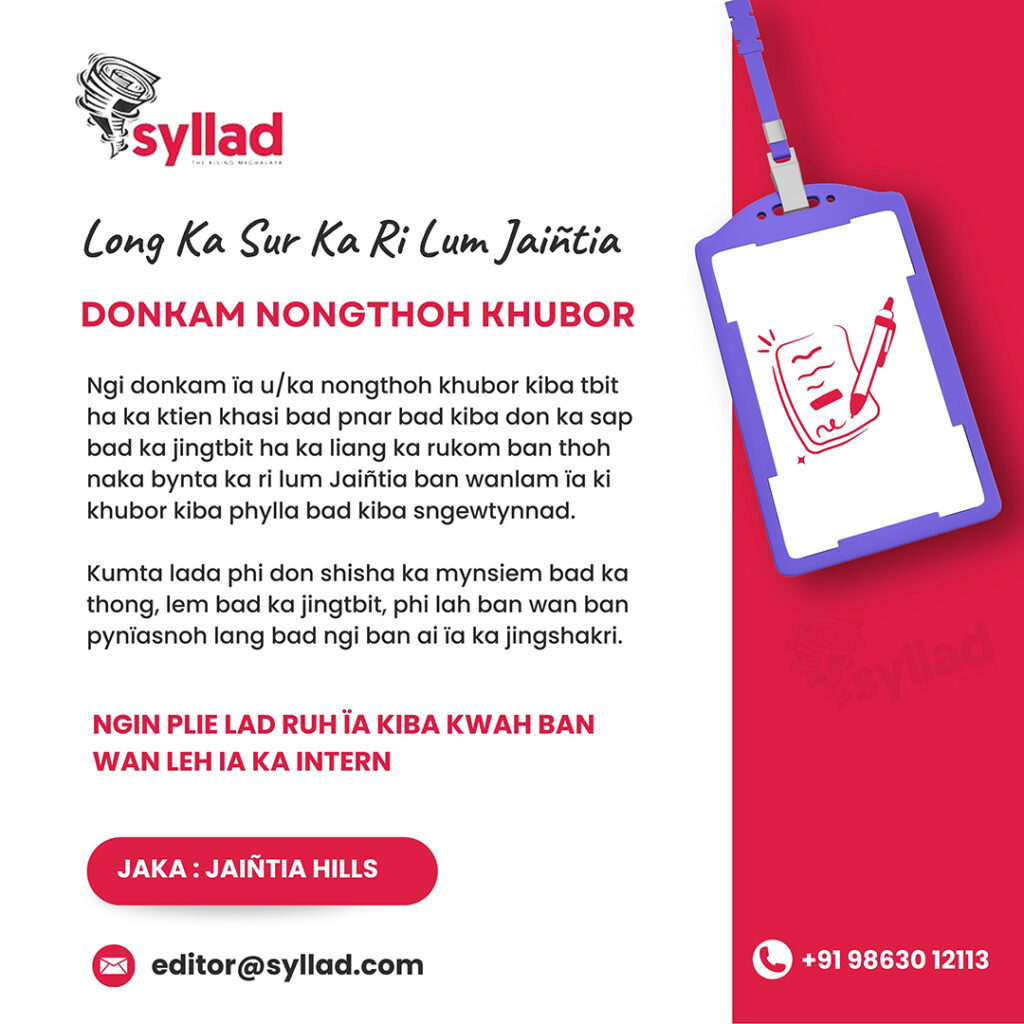Shad Suk Mynsiem draws huge crowds on concluding day
Khasis in the state celebrated the Shad Suk Mynsiem or the ‘Dance of the Joyful Souls’, an annual thanksgiving festival.
Thousands of spectators including tourists witnessed the colourful traditional thanksgiving dancing festival, held at Weiking Ground, Jaiaw in the city for the past over 100 years.
Organized annually by the Seng Khasi Seng Kmie, the Shad Suk Mynsiem, also known as the ‘Spring Festival’ concluded here on Monday.
Braving heavy rainfall, hundreds of people belonging to the ‘Niam Khasi’ including young and old took part in the dancing festival accompanied by the beats of the drums and tangmuri to give thanks to God for all the blessings that he has bestowed.
Highlighting the importance of the festival, an elder of the Seng Khasi said, “Shad Suk Mynsiem is a thanksgiving dance festival of the indigenous people to the Almighty for bountiful harvest, health, wealth and peace.”
He said the dance was a tradition since inception but it was only in 1911, the Seng Khasi decided to have it in an organized manner at the Weiking Ground.
He also informed that over 1,634 dancers took part in the Shad Suk Mynsiem.
The festival was also witnessed by Tourism Minister Paul Lyngdoh and other dignitaries.
During the dance, there was a display of lavish gold and silver jewellery forming part of the attire of the dancers.
The most important of the women’s wears is the silver crown that adorns the heads of the virgin damsel.
The crown and the ‘lasubon’ follower protruding from the nape of the neck, speak of the characteristic qualities that the women should cultivate, in the day to day life, in the upbringing of the children in the home and family.
The Jewellery piece of the male dancer is the silver quiver having three arrows.
The arrows symbolize lifelong companies of a man, from birth till death. In the naming ceremony three arrows form part of the rituals after the birth of a boy child.
The first arrow is designated to guard one-self, the second arrow is for guarding the honour of one’s family and clan and the third arrow is for the territorial protection of the first ancestral mother of the clan.
It is in the Shad Suk Mynsiem that the beat of drums, cymbals, the melodious tunes of the piped instrument-the Tangmuri, has in them a systematic discipline of rhythm, which is pulsating.
The pattern of dancing responds to the change of beats and rhythm of the music, a music that has been kept alive from the deep recesses of tradition.
The festival is also a message that life should be meaningful, eventful and purposeful.



Leave a Reply